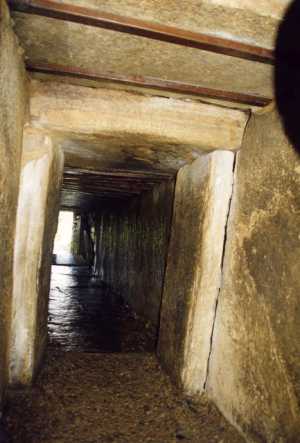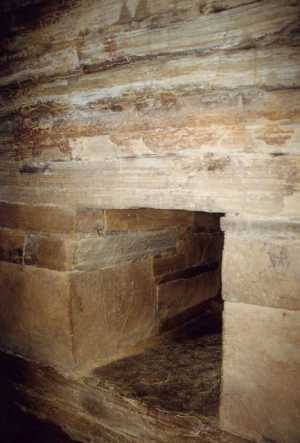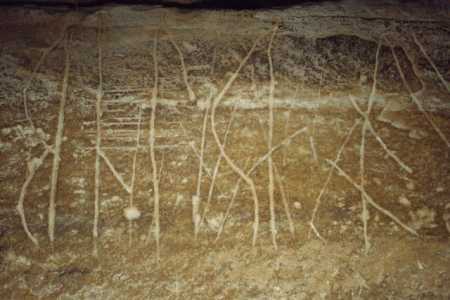|
|
|
|||||



|
The chambered tomb of Maes Howe on the mainland in Orkney is one of the greatest architectural achievements of the prehistoric peoples of Scotland. It was built sometime before 2700 BC.  The chamber is some 4.75 m square with a projecting stone buttress in each corner; one side of each buttress is made of a single upright slab.  The walls of the chamber rise vertically for 1.37 m from the floor and then converge gradually to a height of of 2.6 m, with the slanting natural fracture of the outer edges of the slabs providing an almost smooth surface...  If most chambered tombs represent local communal burial places, Maes Howe "must have been built to demonstrate the power of a social elite. It has been estimated that the labour required for building of most tombs involved around 10,000 man-hours or less, but that the supreme architecture of Maes Howe would have called for some 100,000 man-hours." (The ancient monuments of Orkney by Anna Ritchie and Graham Ritchie, Edinburgh: HMSO, 1995) The Vikings broke into Maeshowe during the 12th century and have left one of the largest collections of runes anywhere, as well as carvings of a dragon, a serpent and a walrus. "Runes developed as a simple way of carving letters into wood, bone or stone using a blade or similar implement. They represent most of the Latin alphabet as required by Old Norse...  At Maeshowe there are about 30 inscriptions, many of which are of the
style 'Thorfinn wrote these runes.' [...Another says,] 'these runes were
carved by the man most skilled in runes on the Western Ocean with the axe
that killed Gaukr Trandkill's son in the South of Iceland.' [...] And another:
'Many a woman has come stooping in here no matter how pompous a person she
was.'" (Runes, The Orkney Guidebook, by Charles Tait, 1997).
|
